目录
1. Zookeeper命令操作
1.1 Zookeeper 数据模型
1.2 Zookeeper服务端常用命令
1.3 Zookeeper客户端常用命令
1.3.1 基本CRUD
1.3.2 创建临时&顺序节点
2. Zookeeper JavaAPI操作
2.1 Curator介绍
2.2 引入Curator
2.3 建立连接
2.4 添加节点
2.5 修改节点
2.6 删除节点
2.7 Watch事件监听
2.7.1 zkCli客户端使用watch
2.7.2 curator客户端使用watch
1. Zookeeper命令操作
1.1 Zookeeper 数据模型
ZooKeeper 是一个树形目录服务,其数据模型和Unix的文件系统目录树很类似,拥有一个层次化结构。
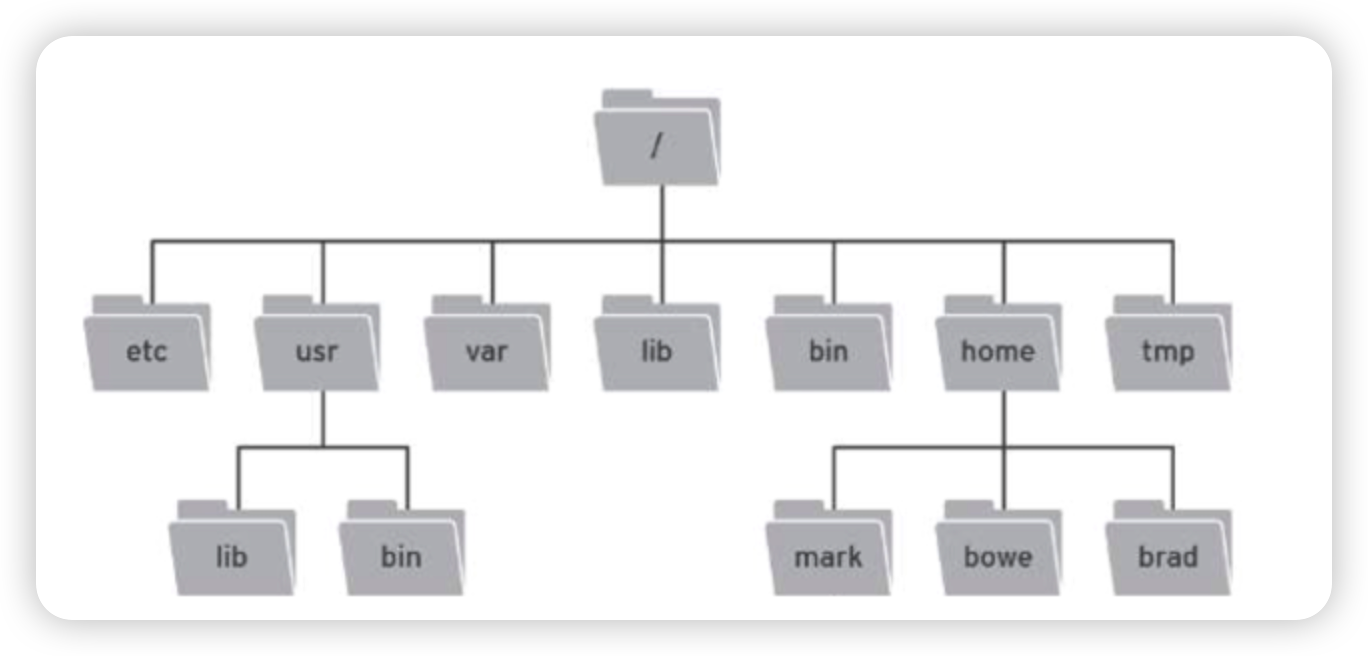
Zookeeper这里面的每一个节点都被称为: ZNode,每个节点上都会保存自己的数据和节点信息。
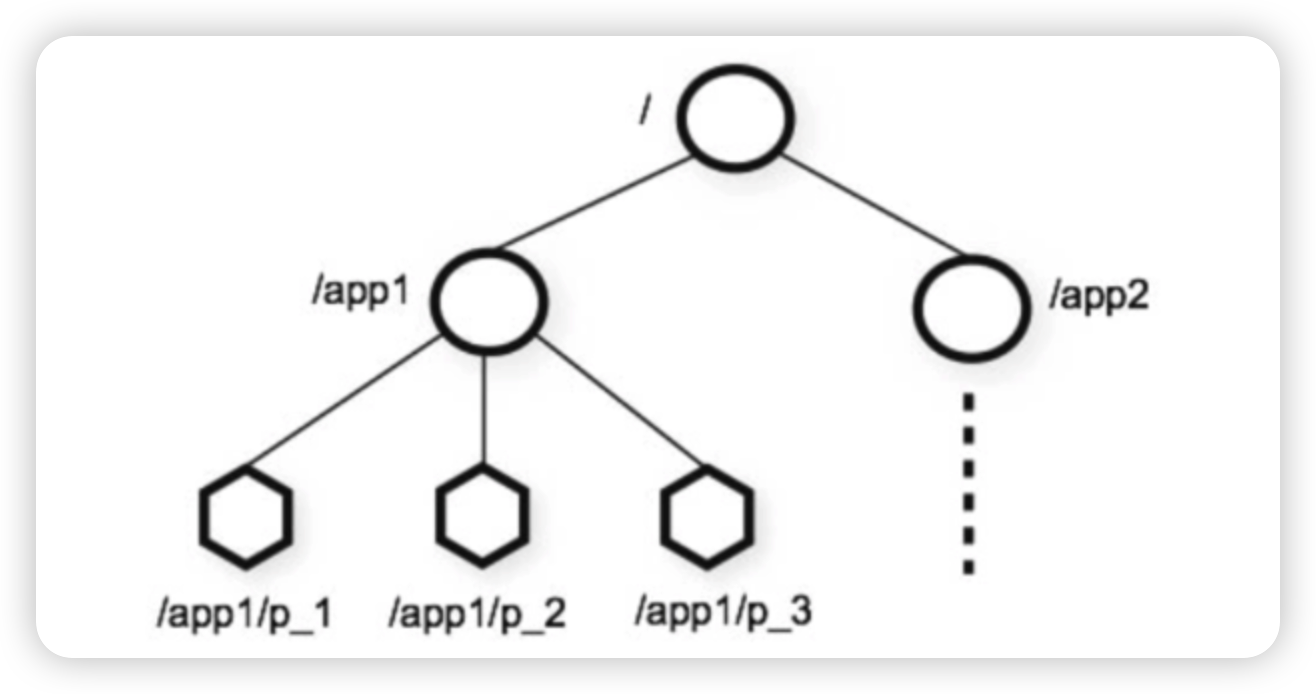
节点可以拥有子节点,同时也允许少量(1MB)数据存储在该节点之下。
节点可以分为四大类:
-
PERSISTENT 持久化节点
-
EPHEMERAL 临时节点 :-e
-
PERSISTENT_SEQUENTIAL 持久化顺序节点 :-s
-
EPHEMERAL_SEQUENTIAL 临时顺序节点 :-es
1.2 Zookeeper服务端常用命令
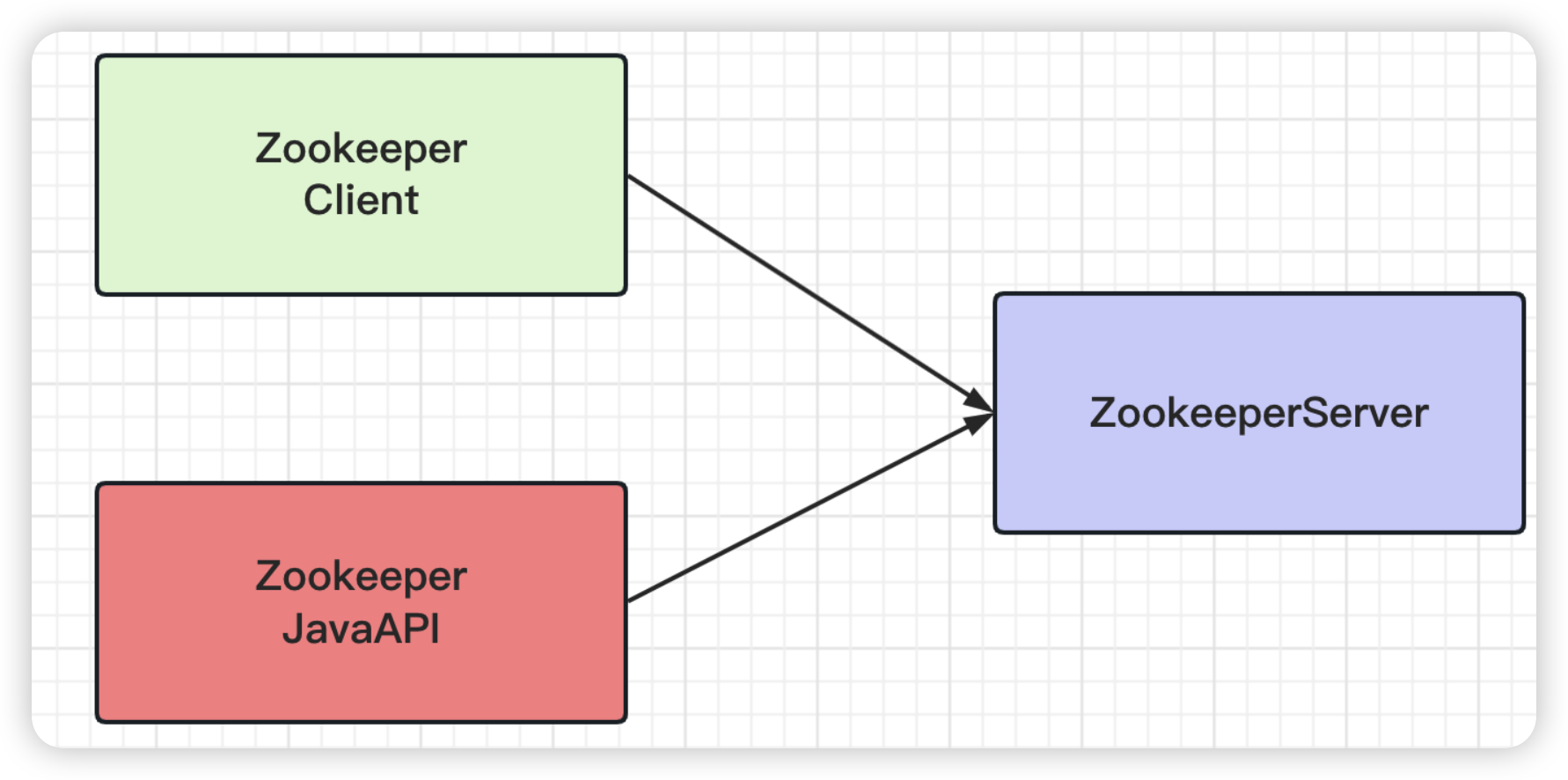
•启动 ZooKeeper 服务
./zkServer.sh start
•查看 ZooKeeper 服务状态
./zkServer.sh status
•停止 ZooKeeper 服务
./zkServer.sh stop
•重启 ZooKeeper 服务
./zkServer.sh restart
1.3 Zookeeper客户端常用命令
1.3.1 基本CRUD
-
连接Zookeeper客户端
# 本地连接 zkCli.sh # 远程连接 zkCli.sh -server ip:2181
-
断开连接
quit
-
查看命令帮助
help
-
显示制定目录下节点
# ls 目录 ls /
-
创建节点
# create /节点path value [zk: localhost:2181(CONNECTED) 0] ls / [zookeeper] [zk: localhost:2181(CONNECTED) 1] create /app1 msb123 Created /app1 [zk: localhost:2181(CONNECTED) 2] ls / [app1, zookeeper] [zk: localhost:2181(CONNECTED) 3] create /app2 Created /app2 [zk: localhost:2181(CONNECTED) 4] ls / [app1, app2, zookeeper]
-
获取节点值
# get /节点path [zk: localhost:2181(CONNECTED) 15] get /app1 msb123 [zk: localhost:2181(CONNECTED) 16] get /app2 null
-
设置节点值
# set /节点path value [zk: localhost:2181(CONNECTED) 17] set /app2 msb456 [zk: localhost:2181(CONNECTED) 18] get /app2 msb456
-
删除单个节点
# delete /节点path [zk: localhost:2181(CONNECTED) 19] delete /app2 [zk: localhost:2181(CONNECTED) 20] get /app2 Node does not exist: /app2 [zk: localhost:2181(CONNECTED) 21] ls / [app1, zookeeper]
-
删除带有子节点的节点
# deleteall /节点path [zk: localhost:2181(CONNECTED) 22] create /app1 Node already exists: /app1 [zk: localhost:2181(CONNECTED) 23] create /app1/p1 Created /app1/p1 [zk: localhost:2181(CONNECTED) 24] create /app1/p2 Created /app1/p2 [zk: localhost:2181(CONNECTED) 25] delete /app1 Node not empty: /app1 [zk: localhost:2181(CONNECTED) 26] deleteall /app1 [zk: localhost:2181(CONNECTED) 27] ls / [zookeeper]
1.3.2 创建临时&顺序节点
-
创建临时节点 (-e)
-
临时节点是在会话结束后,自动被删除的
-
# create -e /节点path value [zk: localhost:2181(CONNECTED) 29] create -e /app1 msb123 Created /app1 [zk: localhost:2181(CONNECTED) 30] get /app1 msb123 [zk: localhost:2181(CONNECTED) 31] quit# 退出后再次连接,临时节点已经删除 [zk: localhost:2181(CONNECTED) 0] ls / [zookeeper]
-
创建顺序节点 (-s)
-
创建出的节点,根据先后顺序,会在节点之后带上一个数值,越后执行数值越大,适用于分布式锁的应用场景- 单调递增.
-
# create -s /节点path value [zk: localhost:2181(CONNECTED) 0] ls / [zookeeper] [zk: localhost:2181(CONNECTED) 1] create -s /app2 Created /app20000000003 [zk: localhost:2181(CONNECTED) 2] ls / [app20000000003, zookeeper] [zk: localhost:2181(CONNECTED) 3] create -s /app2 Created /app20000000004 [zk: localhost:2181(CONNECTED) 4] ls / [app20000000003, app20000000004, zookeeper] [zk: localhost:2181(CONNECTED) 5] create -s /app2 Created /app20000000005 [zk: localhost:2181(CONNECTED) 6] ls / [app20000000003, app20000000004, app20000000005, zookeeper]# 创建临时顺序节点 [zk: localhost:2181(CONNECTED) 7] create -es /app3 Created /app30000000006 [zk: localhost:2181(CONNECTED) 8] ls / [app20000000003, app20000000004, app20000000005, app30000000006, zookeeper] # 退出 [zk: localhost:2181(CONNECTED) 9] quit# 重新链接,临时顺序节点已经被删除 [zk: localhost:2181(CONNECTED) 0] ls / [app20000000003, app20000000004, app20000000005, zookeeper]

-
查询节点详细信息
# ls –s /节点path [zk: localhost:2181(CONNECTED) 5] ls / -s [app20000000003, app20000000004, app20000000005, zookeeper] cZxid = 0x0 ctime = Thu Jan 01 08:00:00 CST 1970 mZxid = 0x0 mtime = Thu Jan 01 08:00:00 CST 1970 pZxid = 0x14 cversion = 10 dataVersion = 0 aclVersion = 0 ephemeralOwner = 0x0 dataLength = 0 numChildren = 4
-
czxid:节点被创建的事务ID
-
ctime: 创建时间
-
mzxid: 最后一次被更新的事务ID
-
mtime: 修改时间
-
pzxid:子节点列表最后一次被更新的事务ID
-
cversion:子节点的版本号
-
dataversion:数据版本号
-
aclversion:权限版本号
-
ephemeralOwner:用于临时节点,代表临时节点的事务ID,如果为持久节点则为0
-
dataLength:节点存储的数据的长度
-
numChildren:当前节点的子节点个数
2. Zookeeper JavaAPI操作
2.1 Curator介绍
Curator是Netflix公司开源的一套zookeeper客户端框架,Curator是对Zookeeper支持最好的客户端框架。Curator封装了大部分Zookeeper的功能,比如Leader选举、分布式锁等,减少了技术人员在使用Zookeeper时的底层细节开发工作。
Curator框架主要解决了三类问题:
-
封装ZooKeeper Client与ZooKeeper Server之间的连接处理(提供连接重试机制等)。
-
提供了一套Fluent风格的API,并且在Java客户端原生API的基础上进行了增强(创捷多层节点、删除多层节点等)。
-
提供ZooKeeper各种应用场景(分布式锁、leader选举、共享计数器、分布式队列等)的抽象封装。
2.2 引入Curator
-
创建maven项目,引入依赖
<?xml version="1.0" encoding="UTF-8"?> <project xmlns="http://maven.apache.org/POM/4.0.0"xmlns:xsi="http://www.w3.org/2001/XMLSchema-instance"xsi:schemaLocation="http://maven.apache.org/POM/4.0.0 http://maven.apache.org/xsd/maven-4.0.0.xsd"><modelVersion>4.0.0</modelVersion><groupId>com.mashibing</groupId><artifactId>zk-client1</artifactId><version>1.0-SNAPSHOT</version><dependencies><dependency><groupId>junit</groupId><artifactId>junit</artifactId><version>4.10</version><scope>test</scope></dependency><!--curator--><dependency><groupId>org.apache.curator</groupId><artifactId>curator-framework</artifactId><version>4.0.0</version></dependency><dependency><groupId>org.apache.curator</groupId><artifactId>curator-recipes</artifactId><version>4.0.0</version></dependency><!--日志--><dependency><groupId>org.slf4j</groupId><artifactId>slf4j-api</artifactId><version>1.7.21</version></dependency><dependency><groupId>org.slf4j</groupId><artifactId>slf4j-log4j12</artifactId><version>1.7.21</version></dependency></dependencies><build><plugins><plugin><groupId>org.apache.maven.plugins</groupId><artifactId>maven-compiler-plugin</artifactId><version>3.1</version><configuration><source>1.8</source><target>1.8</target></configuration></plugin></plugins></build> </project>
2.3 建立连接
方式1
public class CuratorTest {/*** 建立连接*/@Testpublic void testConnect(){/*** String connectString 连接字符串。 zk地址和端口: "192.168.58.100:2181,192.168.58.101:2181"* int sessionTimeoutMs 会话超时时间 单位ms* int connectionTimeoutMs 连接超时时间 单位ms* RetryPolicy retryPolicy 重试策略*///1. 第一种方式//重试策略 baseSleepTimeMs 重试之间等待的初始时间,maxRetries 重试的最大次数RetryPolicy retryPolicy = new ExponentialBackoffRetry(3000,10);CuratorFramework client = CuratorFrameworkFactory.newClient("192.168.58.100:2181", 60 * 1000,15 * 1000, retryPolicy);//开启连接client.start();}
}
重试策略
-
RetryNTimes: 重试没有次数限制
-
RetryOneTime:只重试没有次数限制,一般也不常用
-
ExponentialBackoffRetry: 只重试一次的重试策略
方式2
public class CuratorTest {private CuratorFramework client;/*** 建立连接*/@Testpublic void testConnect(){/*** String connectString 连接字符串。 zk地址和端口: "192.168.58.100:2181,192.168.58.101:2181"* int sessionTimeoutMs 会话超时时间 单位ms* int connectionTimeoutMs 连接超时时间 单位ms* RetryPolicy retryPolicy 重试策略*///1. 第一种方式//重试策略 baseSleepTimeMs 重试之间等待的初始时间,maxRetries 重试的最大次数RetryPolicy retryPolicy = new ExponentialBackoffRetry(3000,10);// client = CuratorFrameworkFactory.newClient("192.168.58.100:2181", 60 * 1000,
// 15 * 1000, retryPolicy);//2. 第二种方式,建造者方式创建client = CuratorFrameworkFactory.builder().connectString("192.168.58.100:2181").sessionTimeoutMs(60*1000).connectionTimeoutMs(15 * 1000).retryPolicy(retryPolicy).namespace("mashibing") //根节点名称设置.build();//开启连接client.start();}
}
2.4 添加节点
修改testConnect注解,@Before
/*** 建立连接*/@Beforepublic void testConnect()
创建节点:create 持久 临时 顺序 数据
public class CuratorTest {/*** 创建节点 create 持久 临时 顺序 数据*///1.创建节点@Testpublic void testCreate1() throws Exception {// 如果没有创建节点,没有指定数据,则默认将当前客户端的IP 作为数据存储String path = client.create().forPath("/app1");System.out.println(path);}@Afterpublic void close(){client.close();}
}

//2.创建节点 带有数据@Testpublic void testCreate2() throws Exception {String path = client.create().forPath("/app2","hehe".getBytes());System.out.println(path);}

//3.设置节点类型 默认持久化@Testpublic void testCreate3() throws Exception {//设置临时节点String path = client.create().withMode(CreateMode.EPHEMERAL).forPath("/app3");System.out.println(path);}
由于是临时节点,需要打断点才能看到节点信息

//1.查询数据 getData
@Test
public void testGet1() throws Exception {byte[] data = client.getData().forPath("/app1");System.out.println(new String(data));
}//2.查询子节点 getChildren()
@Test
public void testGet2() throws Exception {List<String> path = client.getChildren().forPath("/");System.out.println(path);
}//3.查询节点状态信息
@Test
public void testGet3() throws Exception {Stat status = new Stat();System.out.println(status);//查询节点状态信息: ls -sclient.getData().storingStatIn(status).forPath("/app1");System.out.println(status);
}
2.5 修改节点
//1. 基本数据修改@Testpublic void testSet() throws Exception {client.setData().forPath("/app1","hahaha".getBytes());}//根据版本修改(乐观锁)@Testpublic void testSetVersion() throws Exception {//查询版本Stat status = new Stat();//查询节点状态信息: ls -sclient.getData().storingStatIn(status).forPath("/app1");int version = status.getVersion();System.out.println(version); //2client.setData().withVersion(version).forPath("/app1","hehe".getBytes());}
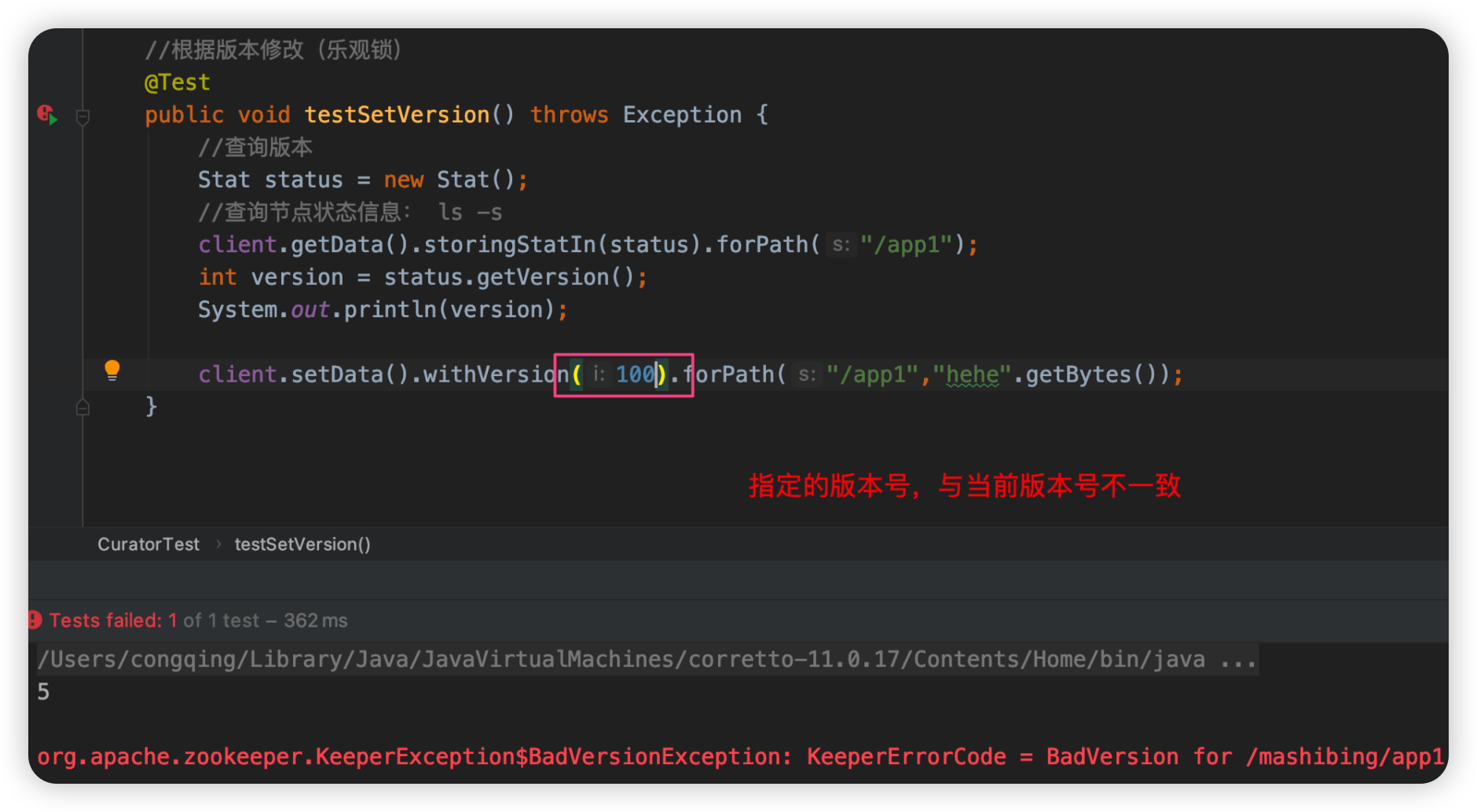
2.6 删除节点
//1.删除单个节点@Testpublic void testDelete1() throws Exception {client.delete().forPath("/app4");}//删除带有子节点的节点@Testpublic void testDelete2() throws Exception {client.delete().deletingChildrenIfNeeded().forPath("/app4");}//必须删除成功(超时情况下,重试删除)@Testpublic void testDelete3() throws Exception {client.delete().guaranteed().forPath("/app2");}//回调 删除完成后执行@Testpublic void testDelete4() throws Exception {client.delete().guaranteed().inBackground((curatorFramework, curatorEvent) -> {System.out.println("我被删除了");System.out.println(curatorEvent);}).forPath("/app1");}
2.7 Watch事件监听
ZooKeeper 允许用户在指定节点上注册一些Watcher,并且在一些特定事件触发的时候,ZooKeeper 服务端会将事件通知到感兴趣的客户端上去,该机制是 ZooKeeper 实现分布式协调服务的重要特性。
ZooKeeper 中引入了Watcher机制来实现了发布/订阅功能能,能够让多个订阅者同时监听某一个对象,当一个对象自身状态变化时,会通知所有订阅者。
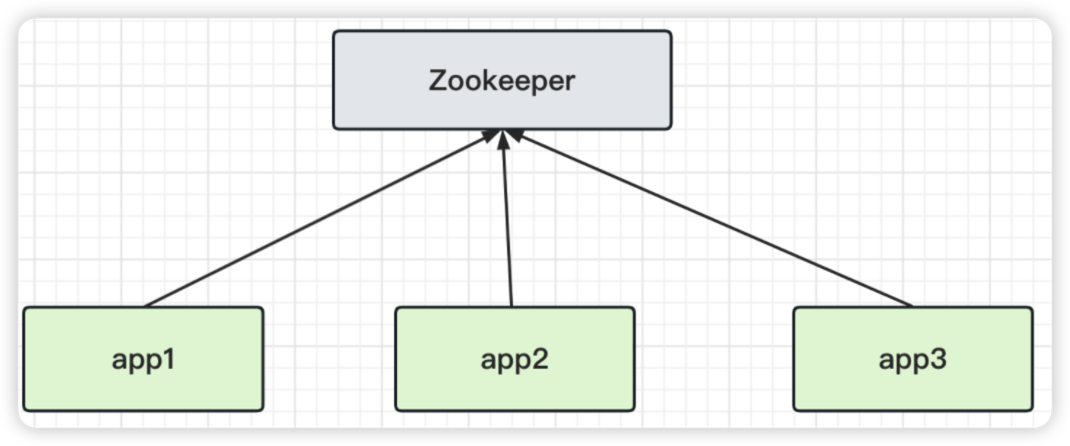
2.7.1 zkCli客户端使用watch
添加 -w 参数可实时监听节点与子节点的变化,并且实时收到通知。非常适用保障分布式情况下的数据一至性。
其使用方式如下
| 命令 | 描述 |
|---|---|
| ls -w path | 监听子节点的变化(增,删) [监听目录] |
| get -w path | 监听节点数据的变化 |
| stat -w path | 监听节点属性的变化 |
Zookeeper事件类型
-
NodeCreated: 节点创建
-
NodeDeleted: 节点删除
-
NodeDataChanged:节点数据变化
-
NodeChildrenChanged:子节点列表变化
-
DataWatchRemoved:节点监听被移除
-
ChildWatchRemoved:子节点监听被移除
1)get -w path 监听节点数据变化
-
会话1

-
会话2

-
再回到会话一

2) ls -w /path 监听子节点的变化(增,删) [监听目录]
-
会话1

-
会话2

-
切到【会话一】 观察输出的监听日志

当然了 delete 目录,也会发生变化
如果对节点数据内容,ls -w 是收不到通知的,只能通过 get -w来实现 。
这里,监听一点触发,就失效了,切记。
3) ls -R -w /path 例子二 循环递归的监听
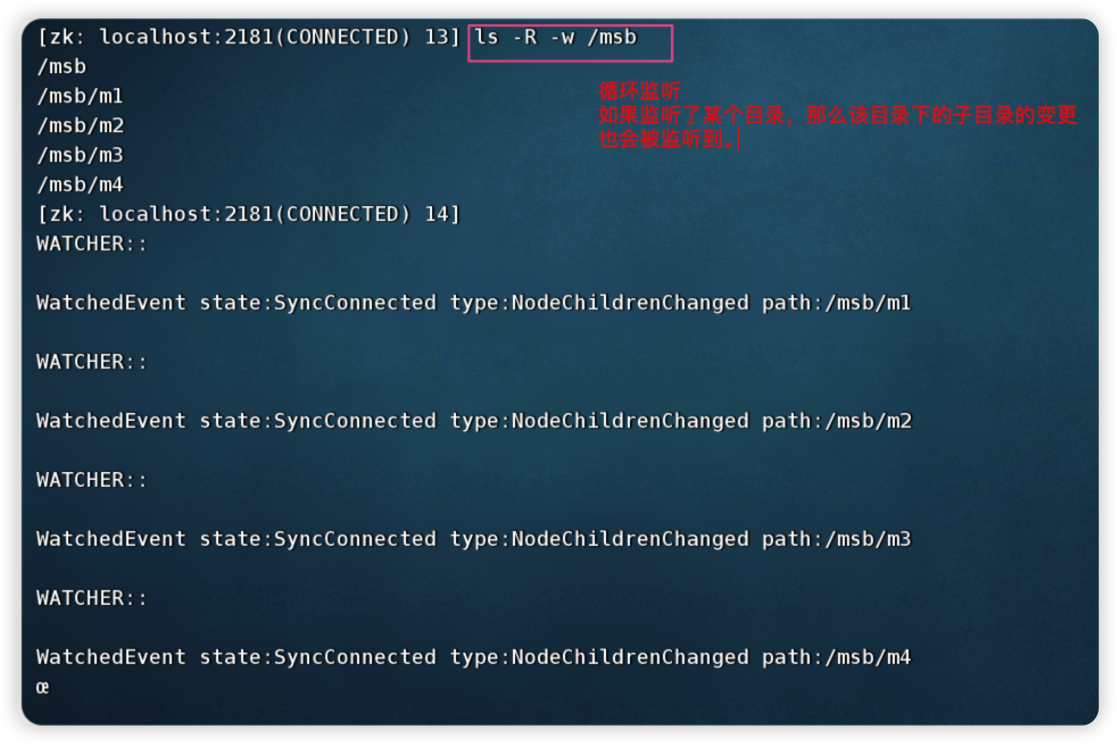
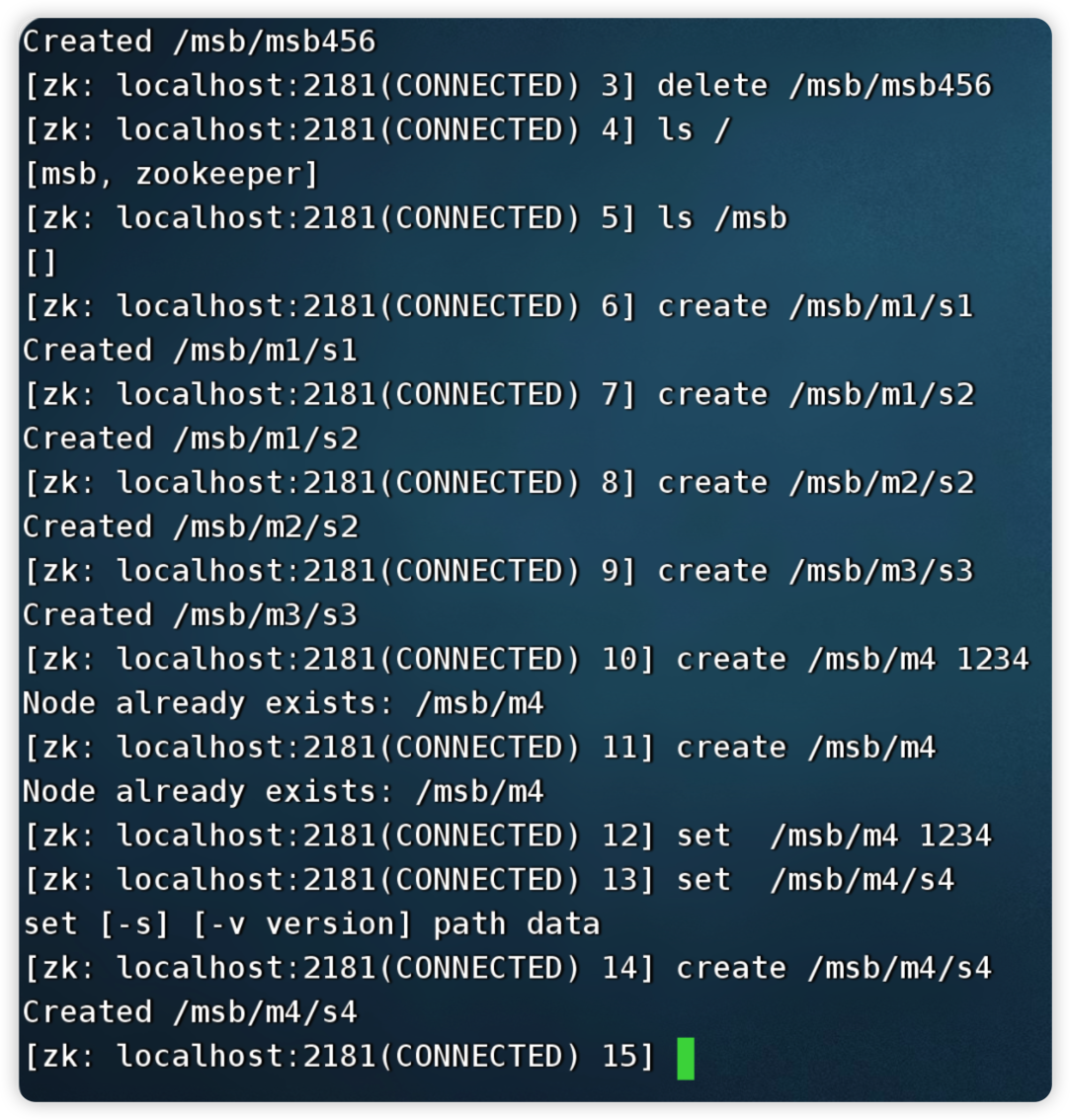
2.7.2 curator客户端使用watch
ZooKeeper 原生支持通过注册Watcher来进行事件监听,但是其使用并不是特别方便需要开发人员自己反复注册Watcher,比较繁琐。
Curator引入了 Cache 来实现对 ZooKeeper 服务端事件的监听。
ZooKeeper提供了三种Watcher:
-
NodeCache : 只是监听某一个特定的节点
-
PathChildrenCache : 监控一个ZNode的子节点.
-
TreeCache : 可以监控整个树上的所有节点,类似于PathChildrenCache和NodeCache的组合
1)watch监听 NodeCache
public class CuratorWatchTest {/*** 演示 NodeCache : 给指定一个节点注册监听*/@Testpublic void testNodeCache() throws Exception {//1. 创建NodeCache对象NodeCache nodeCache = new NodeCache(client, "/app1"); //监听的是 /mashibing和其子目录app1//2. 注册监听nodeCache.getListenable().addListener(new NodeCacheListener() {@Overridepublic void nodeChanged() throws Exception {System.out.println("节点变化了。。。。。。");//获取修改节点后的数据byte[] data = nodeCache.getCurrentData().getData();System.out.println(new String(data));}});//3. 设置为true,开启监听nodeCache.start(true);while(true){}}
}

2)watch监听 PathChildrenCache
/*** 演示 PathChildrenCache: 监听某个节点的所有子节点*/@Testpublic void testPathChildrenCache() throws Exception {//1.创建监听器对象 (第三个参数表示缓存每次节点更新后的数据)PathChildrenCache pathChildrenCache = new PathChildrenCache(client, "/app2", true);//2.绑定监听器pathChildrenCache.getListenable().addListener(new PathChildrenCacheListener() {@Overridepublic void childEvent(CuratorFramework curatorFramework, PathChildrenCacheEvent pathChildrenCacheEvent) throws Exception {System.out.println("子节点发生变化了。。。。。。");System.out.println(pathChildrenCacheEvent);if(PathChildrenCacheEvent.Type.CHILD_UPDATED == pathChildrenCacheEvent.getType()){//更新子节点System.out.println("子节点更新了!");//在一个getData中有很多数据,我们只拿data部分byte[] data = pathChildrenCacheEvent.getData().getData();System.out.println("更新后的值为:" + new String(data));}else if(PathChildrenCacheEvent.Type.CHILD_ADDED == pathChildrenCacheEvent.getType()){//添加子节点System.out.println("添加子节点!");String path = pathChildrenCacheEvent.getData().getPath();System.out.println("子节点路径为: " + path);}else if(PathChildrenCacheEvent.Type.CHILD_REMOVED == pathChildrenCacheEvent.getType()){//删除子节点System.out.println("删除了子节点");String path = pathChildrenCacheEvent.getData().getPath();System.out.println("子节点路径为: " + path);}}});//3. 开启pathChildrenCache.start();while(true){}}

事件对象信息分析
PathChildrenCacheEvent{type=CHILD_UPDATED, data=ChildData{path='/app2/m1', stat=164,166,1670114647087,1670114698259,1,0,0,0,3,0,164, data=[49, 50, 51]}
}
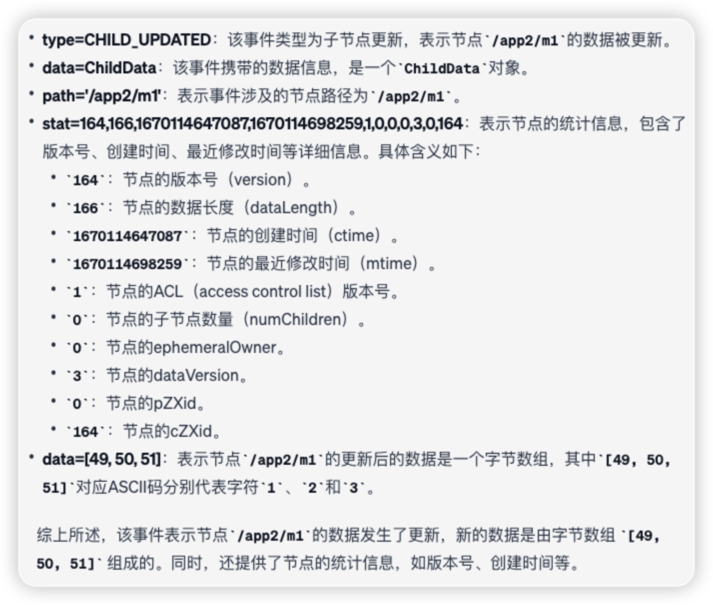
3)watch监听 TreeCache
TreeCache相当于NodeCache(只监听当前结点)+ PathChildrenCache(只监听子结点)的结合版,即监听当前和子结点。
/*** 演示 TreeCache: 监听某个节点的所有子节点*/@Testpublic void testCache() throws Exception {//1.创建监听器对象TreeCache treeCache = new TreeCache(client, "/app2");//2.绑定监听器treeCache.getListenable().addListener(new TreeCacheListener() {@Overridepublic void childEvent(CuratorFramework curatorFramework, TreeCacheEvent treeCacheEvent) throws Exception {System.out.println("节点变化了");System.out.println(treeCacheEvent);if(TreeCacheEvent.Type.NODE_UPDATED == treeCacheEvent.getType()){//更新节点System.out.println("节点更新了!");//在一个getData中有很多数据,我们只拿data部分byte[] data = treeCacheEvent.getData().getData();System.out.println("更新后的值为:" + new String(data));}else if(TreeCacheEvent.Type.NODE_ADDED == treeCacheEvent.getType()){//添加子节点System.out.println("添加节点!");String path = treeCacheEvent.getData().getPath();System.out.println("子节点路径为: " + path);}else if(TreeCacheEvent.Type.NODE_REMOVED == treeCacheEvent.getType()){//删除子节点System.out.println("删除节点");String path = treeCacheEvent.getData().getPath();System.out.println("删除节点路径为: " + path);}}});//3. 开启treeCache.start();while(true){}}
项目方舟框架(ArkUI)之AlphabetIndexer组件)
)
ABCDEF 视频讲解)

——VB/VBA)
)


的检测与实时跟踪)
)

)




 is not installed)


